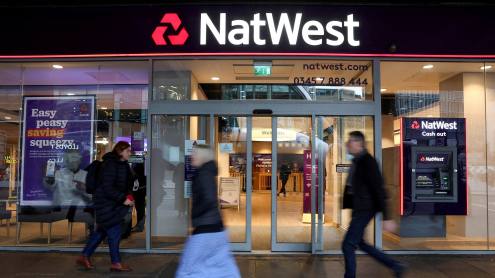On January 19, the UK government outlined a new asset protection scheme and a £50bn fund that, for the first time, will enable the Bank of England to extend loans to some of Britain’s biggest companies through the purchase of “high quality” corporate bonds.
On January 20, an agency set up by the French government to raise funding in the bond markets using a government guarantee, outlined a plan to raise billions of dollars of bailout funding for French banks by issuing dollar-denominated bonds.
In the same week, the Danish government announced a second support package that will see more capital pumped into the domestic financial sector and the extension of the guarantee scheme for the issuance of medium-term loans by banks.
The UK government’s action follows the announcement that Royal Bank of Scotland is set to reveal the biggest loss in British corporate history. RBS executives were this week finalising a trading statement that is expected to show that the bank lost up to £28bn in 2008.
Bring down cost of lending
According to Alistair Darling, chancellor of the exchequer, the UK’s new £50bn lending fund will help to bring down borrowing costs. Mr Darling said the Bank of England would take ”security and assets” that will later be sold ”once the economy starts to improve”.
It is thought the scheme will allow banks to buy government protection for eligible assets – denominated in any currency - by paying a fee, most likely to be paid through the issue of preference shares to the government. The scheme will be detailed more fully by the end of February, says Mr Darling.
Banks will remain responsible for the first loss amount, and will also be liable for about 10% per cent of the residual loss. The government says it inserted this clause to ensure banks would “endeavor to keep losses to a minimum.”
Market commentators believe that the assets most likely to participate in the scheme are portfolios of commercial and residential property loans; structured credit assets, including certain asset-backed securities; and other corporate and leveraged loans. The scheme is expected to continue for at least five years.
US scheme expected too
Similar rescue packages are expected in other countries. Insiders in the new US administration say details of a comparable scheme are expected in the coming days. This follows a fresh capital injection of $20bn by the US government into Bank of America on 15 January, and a guarantee on most of a further $118bn of potential losses on toxic assets. The bank will absorb the first $10bn loss on a pool of $118bn of toxic assets and the Treasury and the FDIC will absorb the next $10bn. Beyond that, 90% of losses will be absorbed through a loan from the Federal Reserve.
The day before this latest package was announced, Bank of America unveiled a fourth quarter loss of $2.39bn and Merrill Lynch – the brokerage acquired by BofA earlier this month - revealed a Q4 loss of $15.31bn. The most recent bailout comes on top of $25bn that the bank received from the TARP fund last October; it has reawakened talk that the US government may have to come to Citi’s rescue for the third time in three months.
France turns to US lenders
In France the Société de Financement de l’Economie Francçaise (SFEF), established last October, believes that selling dollar-denominated debt will help to diversify its funding base. It is the first time France has sold government guaranteed bonds in dollars, and SFEF fundraising plans are part of a government initiative to provide up to €265bn in new loans to France’s banks to ease lending conditions. The SFEF will use an explicit state guarantee to raise debt of up to five years maturity and pass it on to banks at a commercial rate plus a 20 basis point fee.
Danish scheme extended
Denmark’s second support package follows the two-year government guarantee scheme announced in October 2008. According to Moody’s, the institutions eligible to participate in the recapitalisation scheme of about DKK100bn (€13bn) include all solvent banks and mortgage credit institutions in Denmark as well as Danish Ship Finance. The institutions will get a capital injection in the form of hybrid core capital with an annual interest rate of between 9% and 12%, depending on the credit quality assessment of the respective institutions. They have until June 30 to apply.
In addition to the recapitalisation scheme, the Danish government plans to expand the Act on Financial Stability to make it possible for banks and mortgage credit institutions to issue medium-term loans with a state guarantee until the end of 2010.
The state guarantee can be used for maturities of up to three years and loans maturing at the latest on 31 December 2013. Moody's says the guarantee will also be available for junior covered bonds. Junior covered bonds refer to supplementary issuance to cover reduced value of the assets in the cover pool.






